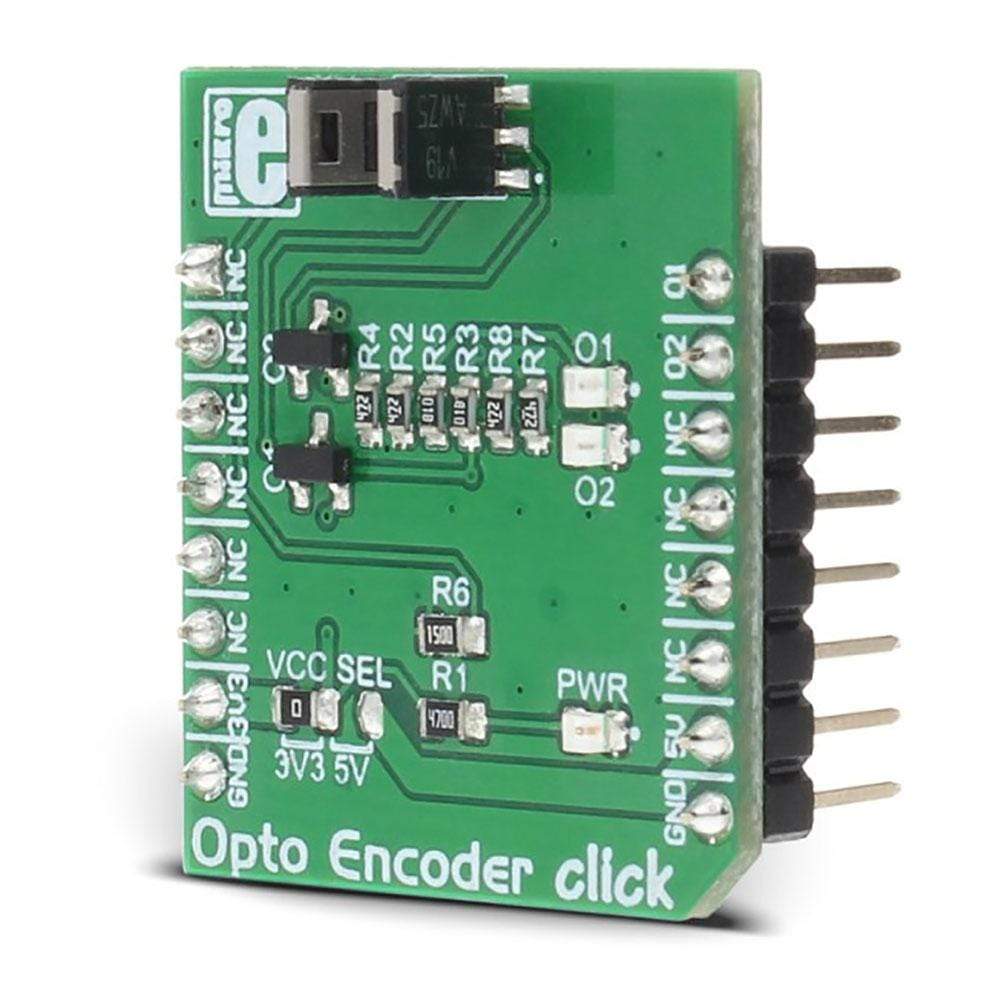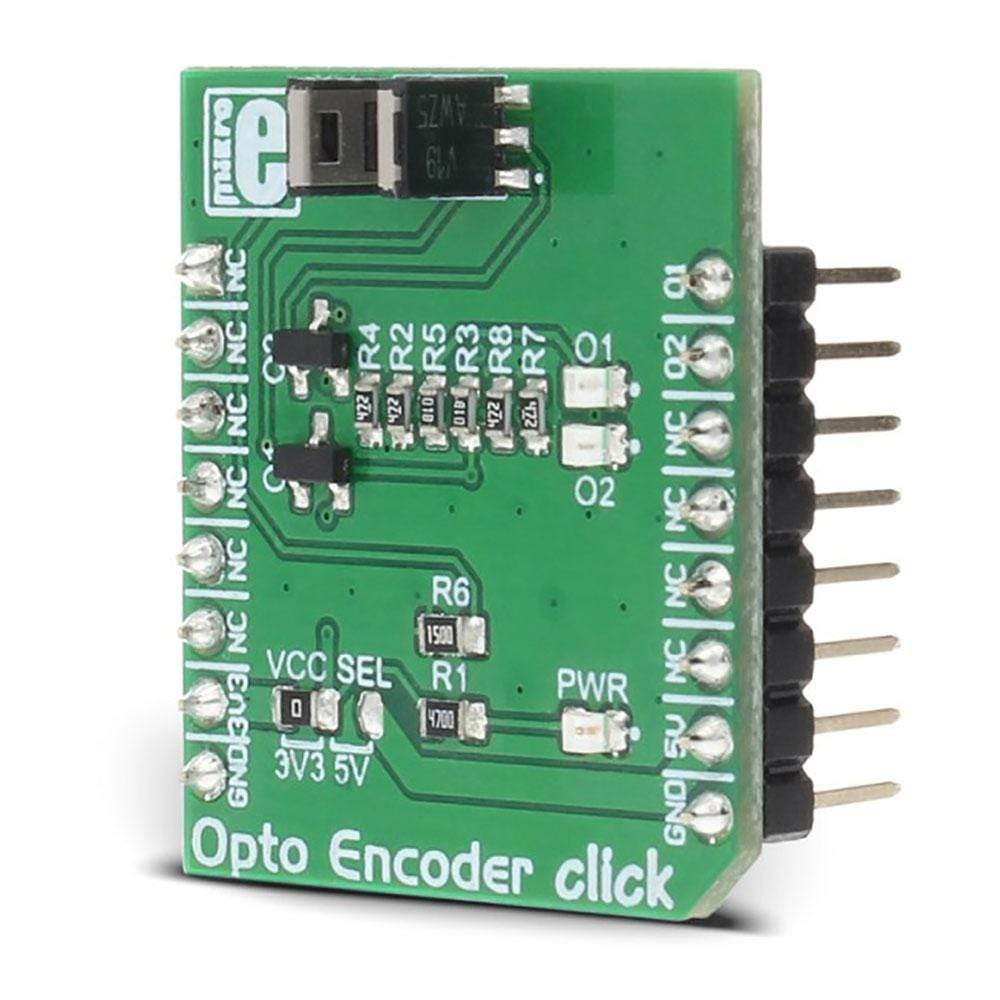
Overview
The Opto Encoder Click Board™ is a linear incremental optical sensor/encoder Click Board™, which can be used for the movement or rotation encoding. Encoders of this type are widely used for many applications which involve precise detection of the position, speed, or rotational angle of an object. Rotary encoders are often used for various types of controllers on many different devices.
Whether it be a rotary encoded knob controller or a rotation encoder on a motor shaft, the principle is the same - it includes an optical sensor, just like the one found on the Opto Encoder Click Board™.
Downloads
L' Opto Encoder Click Board™ est un capteur/codeur optique incrémental linéaire Click Board™, qui peut être utilisé pour le codage de mouvement ou de rotation. Les codeurs de ce type sont largement utilisés pour de nombreuses applications qui impliquent la détection précise de la position, de la vitesse ou de l'angle de rotation d'un objet. Les codeurs rotatifs sont souvent utilisés pour différents types de contrôleurs sur de nombreux appareils différents.
Qu'il s'agisse d'un contrôleur à bouton rotatif codé ou d'un encodeur de rotation sur un arbre de moteur, le principe est le même : il comprend un capteur optique, tout comme celui que l'on trouve sur l' Opto Encoder Click Board™ .
| General Information | |
|---|---|
Part Number (SKU) |
MIKROE-2549
|
Manufacturer |
|
| Physical and Mechanical | |
Weight |
0.018 kg
|
| Other | |
Country of Origin |
|
HS Code Customs Tariff code
|
|
EAN |
8606018712601
|
Warranty |
|
Frequently Asked Questions
Have a Question?
Be the first to ask a question about this.

